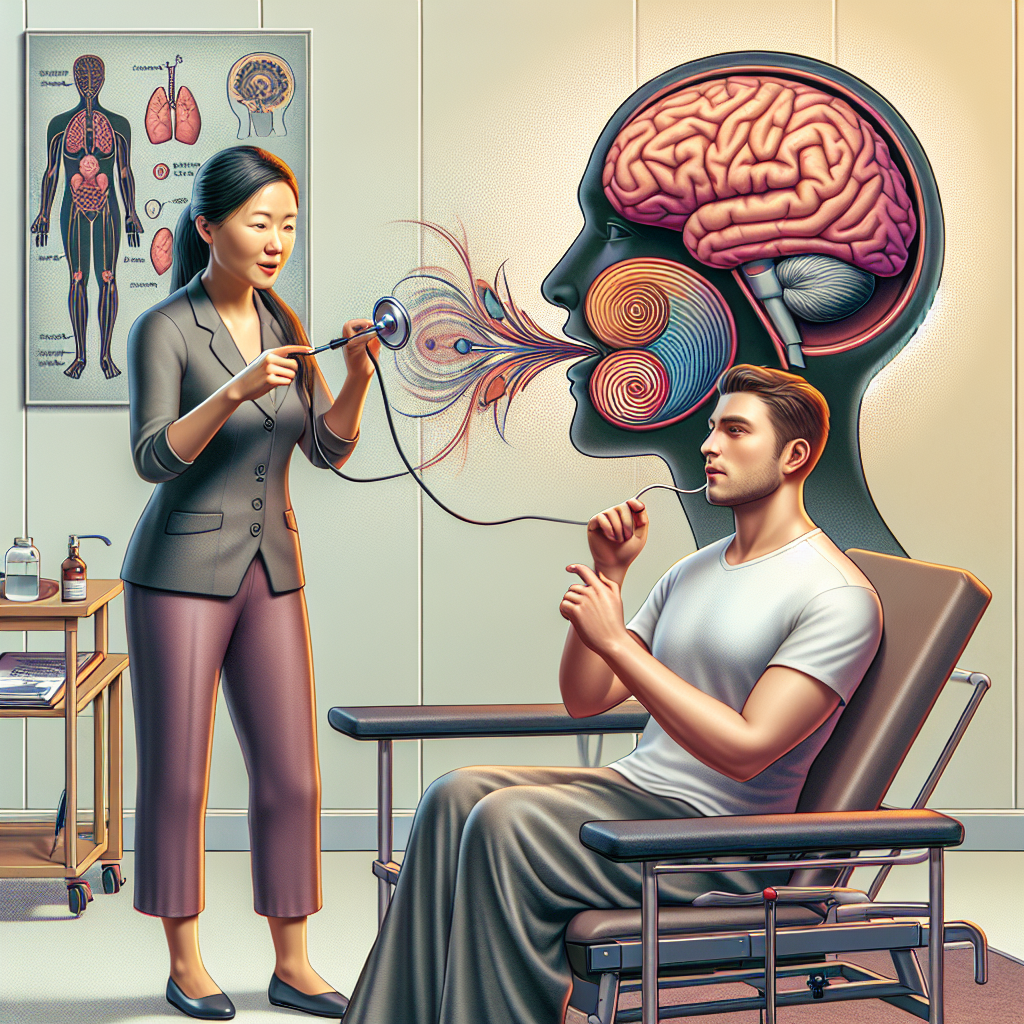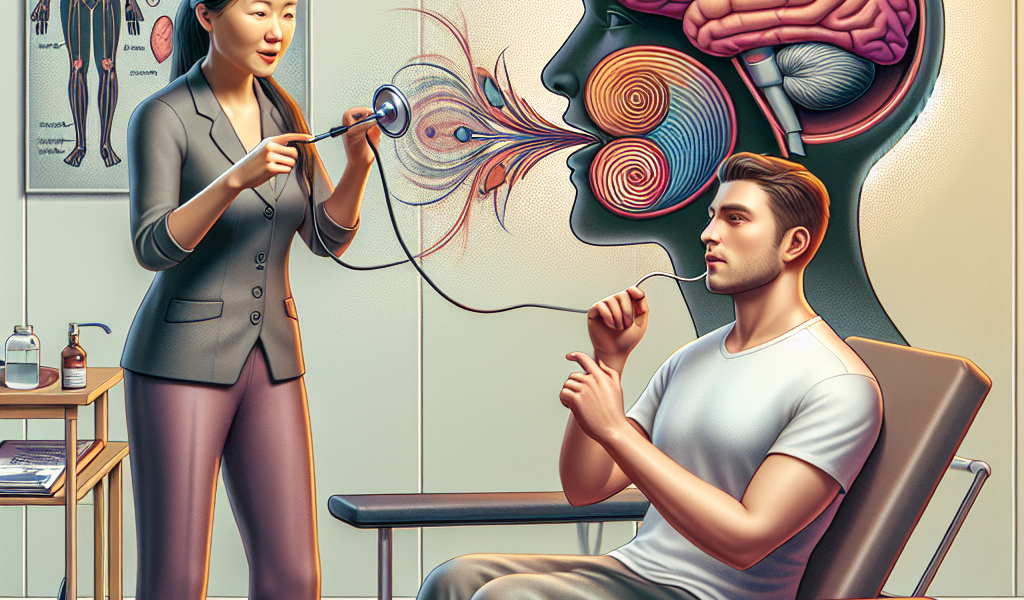How Do Neurorehabilitation Techniques Help In The Recovery Of Speech And Language Abilities?
Imagine the frustration, confusion, or fear that might flood your mind if suddenly, you found yourself struggling to find the right words, or worse, unable to express your thoughts at all. This reality is a daily challenge for people navigating through language and speech impairments. In this regard, the article “How Do Neurorehabilitation Techniques Help In The Recovery Of Speech And Language Abilities?” walks you through the ways these advanced approaches offer hope. Get insight into how innovative neurorehabilitation methods can support the journey back to communication, and hopefully, some semblance of normalcy.

Understanding Neurorehabilitation
In simplest terms, neurorehabilitation is a complex medical process aimed to aid recovery from a nervous system injury, and to minimize and compensate for any functional alterations resulting from it. As you navigate through the journey of neurorehabilitation, you discover it’s more than a medical treatment – it’s a form of healing that bridges the gap between limitations and new possibilities.
Defining Neurorehabilitation
Neurorehabilitation is a specialized form of rehabilitation specifically designed for people who have suffered neurological damage. It involves an array of therapeutic activities aimed at enhancing recovery and improving the quality of life. This process is not just a crash course of exercises or quick fixes but a tailored program catered to the specific, individual needs of the patient.
Purpose and Goals of Neurorehabilitation
The primary goal of neurorehabilitation is to restore functional ability and improve the quality of life for individuals who have experienced trauma, diseases, or disorders of the nervous system. Through a problem-solving approach and with the use of specialized therapies, neurorehabilitation aims to facilitate recovery and equip individuals with the necessary skills and adaptations to regain their independence.
Core Principles of Neurorehabilitation
At the heart of neurorehabilitation are principles that ensure the effectiveness and success of the program. These include individualized treatment plans, family involvement, holistic care, and integration of functional skills into daily practice. By integrating these principles, neurorehabilitation not only targets symptom relief but also constructs a foundation for long-term wellbeing.
Impact of Neurological Disorders on Speech and Language
Impaired speech and language function can drastically affect a person’s capacity to communicate effectively, rupturing their pathways to connection, expression, and participation in daily situations.
Common Neurological Disorders affecting Speech and Language
Various neurological disorders, such as stroke, traumatic brain injury, Parkinson’s disease, and multiple sclerosis, often result in speech and language deficits. These conditions can disrupt the complex network of muscles, nerves, and brain regions involved in speech and language production.
The Neurobiology of Speech and Language
Understanding the neurobiology of speech and language isn’t a stroll in the park. It involves comprehending a vast network of brain regions and neural pathways intricately designed to work together in harmony. Damage to these regions can result in deficits in speech and language, limiting a person’s ability to communicate effectively.
How Neurological Disorders Disrupt Speech and Language
When neurological disorders occur, they can disrupt the entirety or parts of this intricate network, resulting in speech and language deficits. Sometimes patients might struggle with finding the right words, at other times they might have a slur in the speech, and some might have to learn to communicate all anew.
Assessing Speech and Language Deficits
Highly skilled clinicians conduct thorough assessments to measure the extent of speech and language deficits.
Clinical Assessment of Speech and Language
A clinical evaluation typically includes an in-depth analysis of speech (how sounds are formed and connected), language (how words are united to express ideas), and cognition (the ability to reason, solve problems, and remember information).
Standardized Tests and Measures
Standardized tests and measures, developed and verified by researchers, are used to quantify speech/language abnormalities. These assessments play a significant role in formulating the roadmap for future treatment.
Involvement of Family and Friends in Assessing Deficits
Inclusion of family and friends during the assessment process is crucial as they offer valuable insights that might otherwise go unnoticed. Support from loved ones not only makes the assessment process comprehensive but also builds a supportive environment for the patient.

Neurorehabilitation Methods for Speech and Language Recovery
From cognitive rehabilitation therapy to music therapy, there are several methods to help individuals regain their speech and language abilities.
Cognitive Rehabilitation Therapy
Cognitive rehabilitation therapy focuses on improving cognitive functions such as attention, memory, and problem-solving skills. This therapy is often used in conjunction with other treatments to support speech and language recovery.
Speech and Language Therapy
Speech and language therapy is a specialized form of treatment that focuses on both expressive and receptive aspects of communication. It involves techniques to improve phonation, articulation, fluency, and resonance.
Music Therapy
Music therapy is a novel way to stimulate areas of the brain that control speech and language abilities. Through exercises involving singing and rhythmic patterns, music therapy can act as a medium for regaining speech and language skills.
Role of Cognitive Rehabilitation Therapy
Cognitive rehabilitation therapy is integral to the recovery process of speech and language abilities.
Defining Cognitive Rehabilitation Therapy
Cognitive rehabilitation therapy entails various therapeutic exercises that concentrate on ameliorating cognitive deficits caused by neurological damage. Its ultimate goal is to rebuild and enhance the patient’s ability to process and interpret information, enabling a better functioning daily routine.
Techniques used in Cognitive Rehabilitation
Numerous techniques are employed in cognitive rehabilitation like memory aids, computer-assisted cognitive training, and exercises focusing on attention, memory, and executive functions. Each technique aims at harnessing the brain’s capacity for plasticity, leveraging its ability to adapt and change even after injury or illness.
Benefits of Cognitive Rehabilitation Therapy in Speech Recovery
In the context of speech recovery, cognitive rehabilitation can aid in re-learning language skills, underscoring its crucial role in enhancing communication abilities. Not only does it assist in the recovery, but it also improves overall day to day functioning.
Role of Speech and Language Therapy
Speech and language therapy is a pivot in aiding individuals relearn and refine their communication abilities.
Defining Speech and Language Therapy
Speech and language therapy, or SALT, is a conservative therapy that targets the enhancement of communication skills. It does so by supporting the patient to recover lost skills and learn compensatory strategies.
Techniques used in Speech and Language Therapy
From articulation therapy to language intervention activities, voice therapy, and more – a variety of techniques are marshaled to reinforce both the receptive and expressive facets of communication. Each technique is tailormade as per the patient’s requirements, ensuring a personalized approach.
Benefits of Speech and Language Therapy in Language Recovery
Speech and language therapy can bring about significant improvements in language recovery. It can enhance the pronunciation of sounds, facilitate better sentence construction, and improve the ability to understand and use language in everyday scenarios.
Application of Music Therapy in Neurorehabilitation
Music therapy not only strikes a chord in enhancing mood and motivation but also plays a crucial part in linguistic rehabilitation.
Understanding Music Therapy
Music therapy makes use of music to target non-musical goals. In the context of neurorehabilitation, music is the medium through which therapists assist patients to regain their speech and language capabilities.
Techniques used in Music Therapy for Speech Recovery
Music therapy for speech recovery may involve techniques such as singing, rhythm exercises, and improvisation. These methods tap into the connection between music and speech – even if an individual has lost their speech, they usually retain their ability to sing or recognize tunes.
Effectiveness of Music Therapy for Language Ability Restoration
Music therapy can be remarkably effective for enhancing language abilities. This approach can boost speech cadence, fluency, vocal intensity, and respiratory control, leading to improved communication skills.
Integrating Technology in Neurorehabilitation
From virtual reality headsets to AI-powered devices, technology advances have enabled significant strides in the realm of neurorehabilitation.
Use of Virtual Reality
Virtual reality in neurorehabilitation provides an immersive, engaging environment that enables patients to practice real-life scenarios, thereby aiding the recovery process.
Role of Artificial Intelligence
Artificial Intelligence is proving to be a game-changer in neurorehabilitation. With personalized, data-driven insights, AI complements conventional treatments, creating an effective, tailored approach to rehabilitation.
Benefits of Technological Advancements in Neurorehabilitation
Tangible benefits of integrating technology in neurorehabilitation manifest as enhanced patient engagement, precise outcome monitoring, and innovative solutions that bridge the gap between the clinic and home-based practice.
Case Studies of Neurorehabilitation Techniques in Speech Recovery
Looking at real-life cases provides concrete examples of how these methodologies contribute to substantial improvement.
Introduction to Case Studies
Case studies can give an in-depth look at the process and effectiveness of neurorehabilitation techniques. It offers a snapshot of the patient’s journey – their struggles, treatments, progress, and outcomes.
Successful Cases of Speech Recovery
There have been numerous success stories where patients, through a combination of therapies and their inherent resilience, have seen colossal progress in speech and language recovery. Their stories are a testament to the efficacy of neurorehabilitation.
Analysis and Lessons Learned from Case Studies
Analyzing case studies provides learnings about which techniques work, how they can be improved, and what factors influence the outcomes. It gives us a glimpse into the relentless and uplifting truth of human strength and adaptability.
Future of Neurorehabilitation in Speech and Language Recovery
The future looks promising as therapeutical approaches and technological advancements continue to evolve.
Emerging Trends in Neurorehabilitation
There is growing recognition of alternative therapies, such as mindfulness and yoga, in complementing traditional approaches. Furthermore, patient engagement platforms, powered by artificial intelligence, are gaining momentum, signifying the exciting new trends in neurorehabilitation.
Role of Research and Development in Neurorehabilitation
Continuous research and development is pivotal to drive advancement in neurorehabilitation. By pushing the boundaries of knowledge, we are not just broadening our horizons but also paving the way to new treatment strategies and techniques.
Predictions and Expectations for the Future
The future of neurorehabilitation is expected to see more holistic, personalized, and patient-oriented approaches, empowered by a seamless blend of state-of-the-art technologies. The day might not be too far when neurorehabilitation transcends the bounds of clinics and becomes an integral part of the patients’ lifestyle at home.

